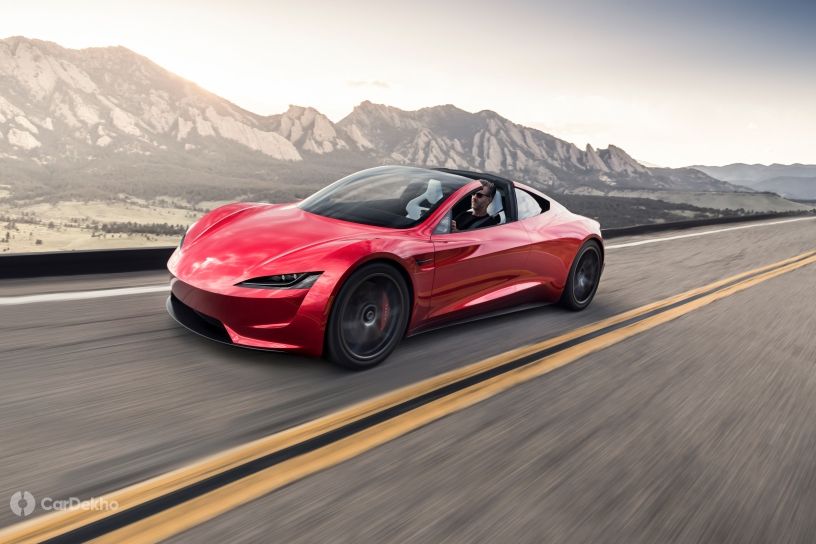Elon Musk Says The Tesla Roadster Will Go From 0-96kmph In 1.1 Seconds!
Published On May 25, 2021 06:33 PM By Dhruv
- Write a comment
The Roadster will use thrust technology to achieve this seemingly impossible feat

Elon Musk’s Twitter game has been rather strong over the years, but one of his most recent tweets has us wondering exactly what is the boundary of physics in his head? In a recent reply to a fellow user who asked if the Tesla Roadster would be able to achieve the 0-96kmph in 1.1 seconds, Musk replied “Yes, with the SpaceX rocket thruster option package. It will be safe, but very intense. Probably not wise for those with a medical condition – same as a hardcore roller coaster.”
Just to give you some context, the fastest accelerating production car in the world is the Dodge Challenger SRT Demon, with a 0-96kmph time of 2.3 seconds. And even that car has to use narrower front tyres, a special ECU and special fuel to achieve this feat. Others like the Bugatti Chiron and Tesla’s own Model S Performance can do the 0-100kmph run in 2.4 seconds. So, exactly how will Tesla cut these times by more than half with its Roadster?

The answer lies in thrust technology. The greatest limitation to achieving seriously quick acceleration times in today’s day and age are tyres. You could have the most powerful engine in a car but it would be of no use if your tyres kept spinning and eating up your forward momentum. Thrust technology eliminates that.

It is the same kind of tech that is used to power aeroplanes or rockets and missiles. It doesn’t need traction to gain momentum, as the force generated by it acts on the object as a whole. These vehicles burn chemicals to achieve this. However, according to Motor Authority, the Tesla Roadster could use compressed air to achieve this feat. After all, a company that is working on saving the environment wouldn’t want to pollute it just to achieve some ridiculous performance number.
Also See: Upcoming Cars
Coming back to reality, do we think that this piece of technology will actually go into production? The short answer is no. Having a vehicle that can achieve high levels of thrust can be dangerous on public roads. Those of you that followed a certain car show religiously will know what happens when you are behind an aeroplane engine that is making peak thrust. Not only that, but having the desired skills to be able to pilot such a vehicle will be another limiting factor. After all, your local RTO (or DMV, as it is called in the US) doesn’t really have the necessary procedures in place to judge your piloting skills.

Does that mean we won’t get to see this piece of tech in action? Well, if Tesla does get it to work, we might see a demonstration on a closed-off track or a runway, conducted by an experienced driver. However, it will just be a technical showcase of what Tesla is capable of doing, and not something they would offer to any layman with enough zeroes in their bank account. Besides, if you are looking for a Tesla that can accelerate from 0-96kmph in less than 2 seconds, there is the Model S Plaid that Tesla claims can do the run in just 1.9 seconds!
1 out of 1 found this helpful















